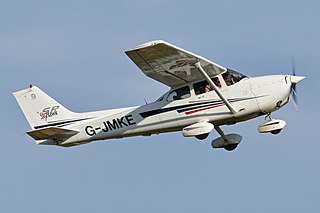
An aircraft is a vehicle that is able to fly by gaining support from the air. It counters the force of gravity by using either static lift or the dynamic lift of an airfoil, or, in a few cases, direct downward thrust from its engines. Common examples of aircraft include airplanes, helicopters, airships, gliders, paramotors, and hot air balloons.

A fixed-wing aircraft is a heavier-than-air flying machine, such as an airplane, which is capable of flight using aerodynamic lift. Fixed-wing aircraft are distinct from rotary-wing aircraft, and ornithopters. The wings of a fixed-wing aircraft are not necessarily rigid; kites, hang gliders, variable-sweep wing aircraft, and airplanes that use wing morphing are all classified as fixed wing.
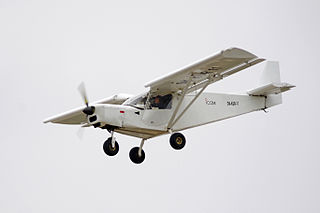
A short takeoff and landing (STOL) aircraft is a conventional fixed-wing aircraft that has short runway requirements for takeoff and landing. Many STOL-designed aircraft also feature various arrangements for use on airstrips with harsh conditions. STOL aircraft, including those used in scheduled passenger airline operations, have also been operated from STOLport airfields which feature short runways.

Elbert Leander "Burt" Rutan is a retired American aerospace engineer and entrepreneur noted for his originality in designing light, strong, unusual-looking, and energy-efficient air and space craft. He designed the record-breaking Voyager, which in 1986 was the first plane to fly around the world without stopping or refueling. He also designed the Virgin Atlantic GlobalFlyer, which in 2006 set the world record for the fastest and longest nonstop non-refueled circumnavigation flight in history. In 2004, Rutan's sub-orbital spaceplane design SpaceShipOne became the first privately funded spacecraft to enter the realm of space, winning the Ansari X-Prize that year for achieving the feat twice within a two-week period.

Peter M. Bowers was an aeronautical engineer, airplane designer, and a journalist and historian specializing in the field of aviation.

A stabilator is a fully movable aircraft horizontal stabilizer. It serves the usual functions of longitudinal stability, control and stick force requirements otherwise performed by the separate parts of a conventional horizontal stabilizer and elevator. Apart from reduced drag, particularly at high Mach numbers, it is a useful device for changing the aircraft balance within wide limits, and for reducing stick forces.

Homebuilt aircraft, also known as amateur-built aircraft or kit planes, are constructed by persons for whom this is not a professional activity. These aircraft may be constructed from "scratch", from plans, or from assembly kits.

The Rutan Model 54 Quickie is a lightweight single-seat taildragger aircraft of composite construction, configured with tandem wings.
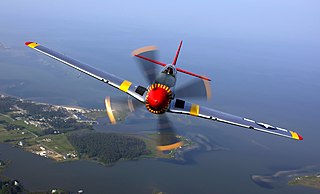
An airplane or aeroplane, informally plane, is a fixed-wing aircraft that is propelled forward by thrust from a jet engine, propeller, or rocket engine. Airplanes come in a variety of sizes, shapes, and wing configurations. The broad spectrum of uses for airplanes includes recreation, transportation of goods and people, military, and research. Worldwide, commercial aviation transports more than four billion passengers annually on airliners and transports more than 200 billion tonne-kilometers of cargo annually, which is less than 1% of the world's cargo movement. Most airplanes are flown by a pilot on board the aircraft, but some are designed to be remotely or computer-controlled such as drones.

A radio-controlled aircraft is a small flying machine that is radio controlled by an operator on the ground using a hand-held radio transmitter. The transmitter continuously communicates with a receiver within the craft that sends signals to servomechanisms (servos) which move the control surfaces based on the position of joysticks on the transmitter. The control surfaces, in turn, directly affect the orientation of the plane.

Zenair Ltd is a Canadian kit aircraft producer founded by aeronautical engineer Chris Heintz and based in Midland, Ontario.
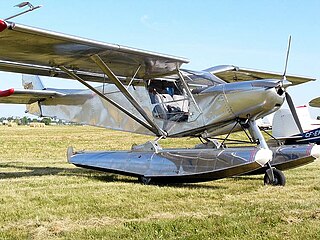
The Zenith STOL CH 701 and CH 750 are a family of light, two-place kit-built STOL aircraft designed by Canadian aeronautical engineer Chris Heintz through his Midland, Ontario, based company, Zenair. The CH 701 first flew in 1986 and the design is still in production. The CH 750 was first introduced in 2008. The CH 701 was later developed into the four-place Zenith STOL CH 801.
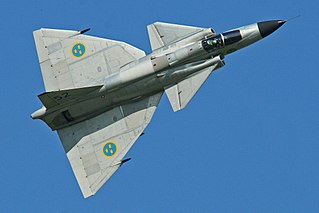
In aeronautics, a canard is a wing configuration in which a small forewing or foreplane is placed forward of the main wing of a fixed-wing aircraft or a weapon. The term "canard" may be used to describe the aircraft itself, the wing configuration, or the foreplane. Canard wings are also extensively used in guided missiles and smart bombs.
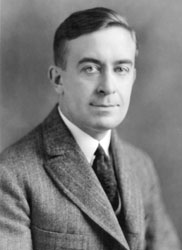
Alfred Victor Verville was an American aviation pioneer and aircraft designer who contributed to civilian and military aviation. During his forty-seven years in the aviation industry, he was responsible for the design and development of nearly twenty commercial and military airplanes. Verville is known for designing flying boats, military racing airplanes, and a series of commercial cabin airplanes. His planes were awarded with the Pulitzer Speed Classic Trophy in 1920 and 1924.
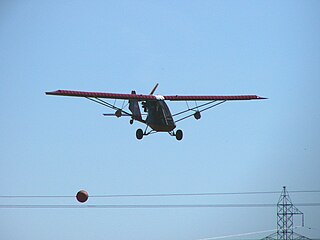
The Birdman Chinook is a family of single and two-place, pusher configuration, high-wing ultralight aircraft that was first flown on 12 December 1982 and produced by Birdman Enterprises of Edmonton, Alberta, Canada, starting in 1983.
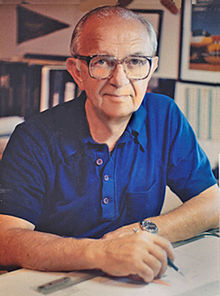
Ladislao Pazmany was an aviation pioneer, aeronautical engineer, designer, pilot, teacher, speaker, and author. Born a Hungarian, Pazmany grew up, went to school, and worked in his formative years in Argentina. He then immigrated to the United States where he lived for the remainder of his life.
Percival Hopkins Spencer was an American inventor, aviation pioneer, test pilot, and businessman. He was one of the Early Birds of Aviation, a group which required members to have flown a glider, gas balloon or airplane prior to December 17, 1916. That association credited Spencer with "the longest active flight record in aviation history": he first soloed in 1914 and was a licensed pilot until 1987.

A three-surface aircraft or sometimes three-lifting-surface aircraft has a foreplane, a central wing and a tailplane. The central wing surface always provides lift and is usually the largest, while the functions of the fore and aft planes may vary between types and may include lift, control and/or stability.
Swen (Sven) Swanson was a Swedish aircraft designer. He designed aircraft for various aviation companies in the United States and also designed prototype and experimental airplanes. He was known as an innovative aircraft designer. He later worked in partnership with Ole Fahlin. Swanson started designing airplanes while in his teens and by the time he was in college he had designed his third airplane. He founded the Swanson Aircraft Company Inc. and became its chief engineer and president. While working for his own company he designed and built the Swanson W-15 Coupe. He has been described as a "brilliant man of great capabilities and extreme modesty".
Chris Heintz was a French and Canadian aeronautical engineer, known for his kit aircraft designs.


















